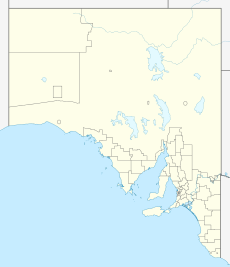Yulte Conservation Park facts for kids
Quick facts for kids Yulte Conservation ParkSouth Australia |
|
|---|---|
|
IUCN Category III (Natural Monument)
|
|
| Nearest town or city | Myponga |
| Established | 24 January 1974 |
| Area | 41 hectares (100 acres) |
| Managing authorities | Department for Environment and Water |
| See also | Protected areas of South Australia |
Yulte Conservation Park is a special protected area in South Australia. It's located near the town of Myponga. This park is about 55 kilometers (34 miles) south of Adelaide, the state capital.
The park helps protect a unique part of Australia's nature. It's a great place to learn about local plants and animals.
Contents
Yulte Conservation Park: A Natural Treasure
Yulte Conservation Park covers an area of 41 hectares (about 101 acres). This is roughly the size of 100 football fields! It was officially created on January 24, 1974. This happened under a special law called the National Parks and Wildlife Act 1972.
What Makes Yulte Park Special?
In 1980, experts described the park's amazing features. It has steep, hilly land with different types of trees.
Trees and Plants
The park is home to various Eucalyptus trees. You can find Eucalyptus baxteri and Eucalyptus obliqua in the open forests. In the valleys, you might see Eucalyptus leucoxylon and Eucalyptus fasciculosa.
As you go up to the ridges, the trees change. Here, Eucalyptus baxteri mixes with Eucalyptus osmophylla. The ground layer is also very interesting. It has a thick growth of plants like Xanthorrhoea, Pultenaea, and Casuarina species. On the ridges, you can also spot Banksia ornata.
Animals and Birds
Yulte Conservation Park is a haven for many bird species. These birds are typical of the Adelaide hills area. One special bird found here is the uncommon beautiful firetail. The park is mostly untouched by human activity. This helps the animals and plants thrive.
Why is Yulte Park Protected?
Yulte Conservation Park is very important for nature. It is classified as an IUCN Category III protected area. This means it's protected mainly for its natural features. It helps keep special plants and animals safe.
In 1980, the park was listed on the Register of the National Estate. This was a list of important natural and historical places in Australia. Even though that list no longer exists, the park remains a vital protected area. Its small size means it needs careful looking after. This helps protect it from outside changes.


